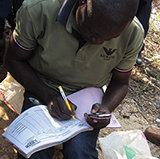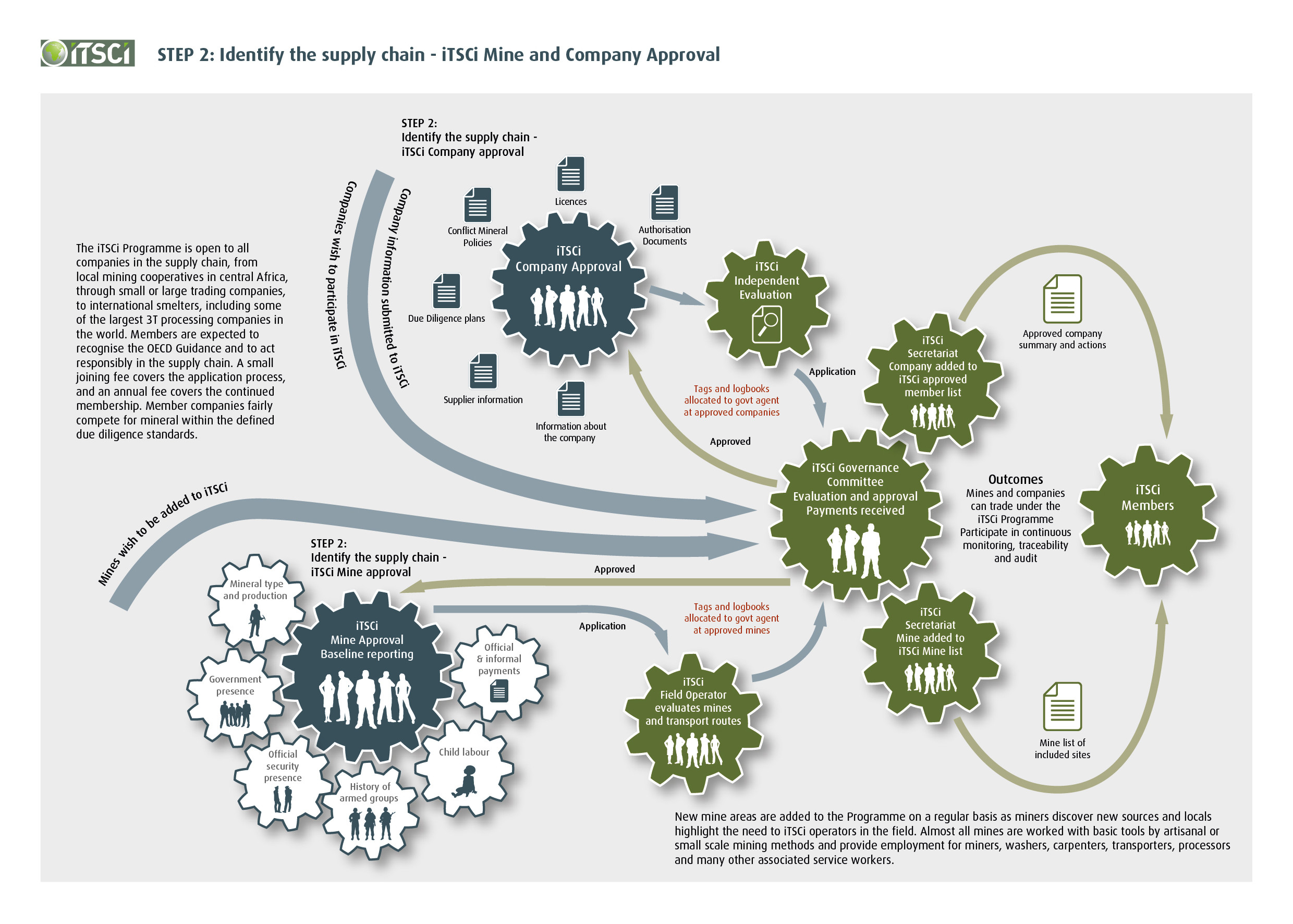Making company information transparent
Companies who are committed to due diligence and wish to be recognised as responsible suppliers apply to become members of ITSCI to demonstrate that commitment to business partners, as well as publicly. Applicant companies submit important information such as ownership, trade history, due diligence policies and plans, which are assessed for risks in a preliminary assessment by our independent evaluator. In the case of companies that are then accepted as members, a summary of their status, due diligence understanding and risks are published, together with recommended improvement actions.
Understanding company management and policies is important for OECD Step 1

What do we do?
Help stakeholders understand due diligence
policies etc Companies aiming to demonstrate that they are responsible become members of the Programme after submission of information on their
Assess companies and making them transparent
Companies aiming to demonstrate that they are responsible become members of the Programme after submission of information on their trade history, potential links to conflict, and due diligence policies and plans, and a preliminary assessment by our independent evaluator.
Monitor production and risks around mining areas
Mining areas and transport routes are confirmed by our field teams who visit and report on the situation at every mine site prior to potential inclusion in the traceability system as well as continually thereafter.
Our field staff get to know their local area and work with the local authorities, land owners and mining communities to understand the conditions on the ground; not just on a one of basis but through regular visits, advice and training. When new mining areas are found they can be integrated into ITSCI after the field staff have reported information for approval by the Governance Committee.
Initial mine baselines evaluate likely plausible production, presence of official security and authorities, risks of child labour or other abuses and so on, and, this information is updated as necessary as the mine begins to produce. The field team use the same transport routes to reach the mines and become aware of any illegal activity on their travels.
Almost all mines are worked with basic tools by artisan or small scale mining methods and provide employment for miners, washers, carpenters, transporters, processors and many other associated service workers.
Information on individual mine location and production is not made public since that is commercially valuable information that can affect price and competition.
Implement traceability of mineral sources
blah blah tagging
Record possible risks and concerns
w/b and other source of info
Involve local communities
w/b and other source of info
Report on resolution of risks
incidents blah
Audit upstream companies
audit blah
Promote transparency in annual reporting
reports blah
Provide data and information for wider due diligence
reports blah
Approval process
To be eligible for full membership, companies need to hold all relevant, country-specific, legal documents such as an operating license or a certificate of company incorporation. They must also send a range of documentation to the iTSCi Secretariat, which includes information relating to:
- Company history, size, detailed activities, affiliated companies, and number of employees
- Company ownership, investors, management staff, and their other or previous occupations
- Typical areas of operation, production levels, suppliers from Great Lakes countries over the last three years and other similar information
- Possible conflict, military or political links of the company, its owners, investors, staff members or its suppliers, and other possible issues in relation to due diligence
- Company policies relating to conflict minerals, management and follow-up of due diligence, inclusion of requirements in contracts and related issues
An Independent Evaluator will carry out a risk assessment and send applicants the findings for comment. This will include areas of concern and recommended risk management practices to be agreed by the company and the Governance Committee.
The Secretariat will then publish a summary and recommendations of the company level risk assessment on the iTSCi website.
A company that is not accepted into iTSCi can re-apply after three months showing evidence that the issues that led to non-acceptance have been resolved. Non-acceptance means that a company cannot use iTSCi membership to provide evidence of its conformance with the OECD Due Diligence Guidelines (DDG).
This process is compatible with Step 2 of the OECD DDG.
policies etc Companies aiming to demonstrate that they are responsible become members of the Programme after submission of information on their
policies etc Companies aiming to demonstrate that they are responsible become members of the Programme after submission of information on their


